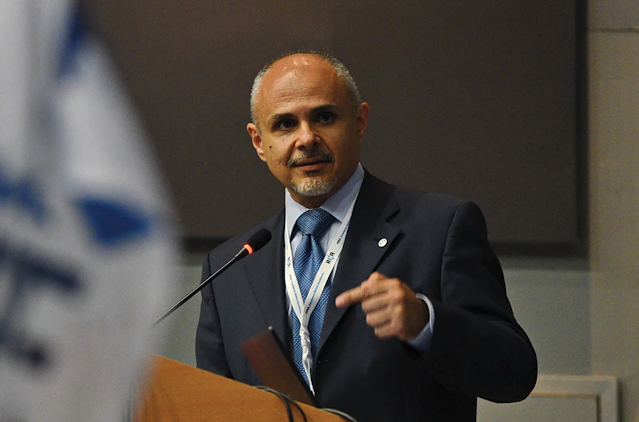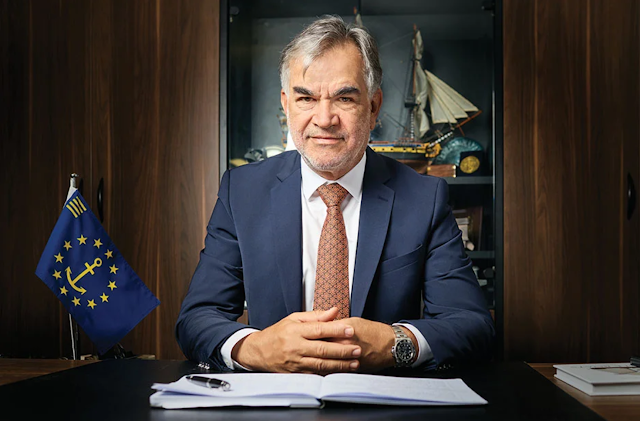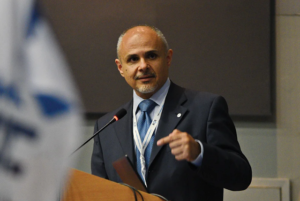| George Teriakidis, Area Manager, DNV Maritime |
The maritime industry has committed to reducing its GHG emissions and aims to achieve a zero-emission target by 2050. However, the question remains whether this goal is an illusion or a reality.
A lot of factors need to come together to enable the energy transition. These include regulations to ensure safety, landside fuel production, transport and bunkering, and a massive rollout of zero-carbon energy. Also, continually evaluating safety risks will be necessary to ensure a safe transition of all possible options.
The recent Maritime Forecast to 2050 report launched by DNV in September considers the comprehensive production, distribution and bunkering infrastructures required to shift the maritime industry to carbon-neutral fuels. It also presents an updated outlook on regulations, drivers, future technologies, and costs for decarbonizing shipping. It models two different decarbonization pathways: ‘Current IMO ambitions to 2050’ and ‘Full Decarbonization by 2050’. DNV’s modelling points to a diverse future energy mix comprising both fossil and carbon-neutral fuels, with fossil fuels, gradually phased out by 2050.
The report’s new and extended fuel-mix scenario library for shipping can be applied to DNV’s updated Carbon-Risk-Framework to help shipowners find the most efficient and cost-effective fuel strategies while focusing on fuel flexibility and energy efficiency remains key to easing the transition and minimizing the risk of investing in stranded assets.
In terms of fuel choice, uncertainties around future price and availability means that a clear winner among the many options – ammonia, methanol, diesel or methane, produced from sustainable biomass, renewable electricity or fossil fuels with carbon capture and storage – cannot be identified yet or in the near future, especially for the ocean-going / tramp shipping sector. The report outlines under what conditions each option will proliferate. DNV’s enhanced GHG Pathway Model estimates the investment costs of implementing new fuel supply chains and fuel technologies and energy efficiency measures onboard the world fleet.
For energy transition and decarbonisation, the maritime industry can be assisted by accelerating digitalisation. By using digital tools, the industry can achieve energy savings of up to 15 per cent by 2050, in certain cases. Better integration and communication between ships, shore offices, and ports will improve planning, scheduling, and logistics operations, thus increasing fleet utilisation for liner fleets among others.
Illusion or reality? Is there a verdict?
The path to a tangible goal of zero emissions in shipping by 2050 is challenging, but it is not an illusion. Shipowners must take small steps, to ensure an incremental reduction of CO2 emissions from their vessels, over a period of years. This path is totally different from how shipping has operated in decades past. The shipping industry can achieve a sustainable future and contribute to global efforts to mitigate climate change by working together. In other words, collaboration among stakeholders is necessary for this new era. The question is not whether this goal is an illusion or reality but how quickly the industry can come together and transition to a sustainable future.
We are firm believers of the fact that collaboration is the fuel of the future. DNV is very proud to be a founding member of the Maritime Technologies Forum, as we firmly believe that Class can play an important role as trailblazers for regulators, gathering expertise, partnering with industry, and developing guidelines.
The industry is making progress towards achieving this goal, and several pathways exist to achieve it. However, significant investments in new technologies and infrastructure and the support of governments and regulators are equally necessary.
On the other hand, no industry can decarbonize in isolation, so global industries need to make the right choices together, and sustainable energy should be directed to where it has the biggest impact on reducing GHG emissions. The ultimate hurdle is fuel availability and to overcome it, supply chains must be built through cross-industry alliances and not just depend on ship owners’ choices.
At DNV, we are working every day to help bring the maritime industry and the many partners, stakeholders, industries, and the public together – because only by building together, we can achieve these shared goals.















